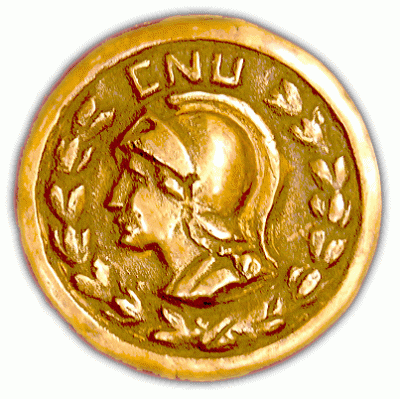Grady Clay is a name anyone interested in Louisville or urbanism should know. He’s a distinguished writer and journalist, covering urban issues and architecture for the Courier-Journal back in its heyday. Grady also served as editor of Landscape Architecture magazine from 1960 to 1985, provided commentary for NPR’s “Crossing the American Grain,” and helped juror the design competition that produced the U.S. Vietnam Veterans Memorial. He was appointed to two Presidential task forces by Lyndon B. Johnson for his expertise in the problems of suburban sprawl. Now he formally joins the notable ranks of some of the world’s greatest urbanists as a recipient of the Congress for the New Urbanism’s Athena Medal.
The Athena Medal is named for the Greek goddess of wisdom, reason, and strategy, patron of Athens and defender of the city. The CNU awards the honor to the most notable urban thinkers who have had a substantial impact on the built environment. And it’s entirely appropriate that Grady Clay should receive such an award as he was the first to coin the term “New Urbanism,” 35 years before the Charter of the New Urbanism was signed.
In 1959, Grady penned “Metropolis Regained” for Horizon Magazine. He lamented that Interstate highways were destroying city life and watched “sober, barren housing developments” stretch out into the suburbs. Even in the middle of the 20th century, he saw the many problems of highways:
Those marvelous one-way, multi-lane highways, carrying their many thousands in and out of the city, represented a theory of planning—and a system of social organization—which has turned out to be far less feasible than we thought. It might be called the Fallacy of Unilateral Dedensification.
Grady knew that the forces behind mid-century suburbanization and highway building couldn’t fix the city: “The theory that got us into this predicament, after all, is not likely to provide the best way out of it.” He recognized, though, a growing force of change for the better, a growing set of “New Urbanists.” Here’s what Grady observed a New Urbanist believes:
We believe in the city, they would say, not in tearing it down. We like open space, but hold that too much of it is just as bad as too little. Â We want that multiplicity of choice which the city has always offered, but is now in danger of losing… We like the intimacy of the crowd, but we also like to escape from it—we like the busy downtown plaza, but also the pleasant walkways of a residential district. We are appalled at your civic centers, your housing projects, and your expressways. They seem to be designed to be self-contained mechanisms for performance, procreation, and propulsion. We come to the city seeking community, pleasure, jobs, and other people; you seem to be destroying the first, demoralizing the second, decentralizing the third, and displacing the last. We like it here—only give us a break!
How strongly those words ring true 50 years later as we grapple with exactly the same issues. We have come so far yet have fallen prey to a repeating historical cycle; if only we could hear the words of our visionary leaders. (Read the entire article here. Warning: PDF )
Grady Clay joins the ranks of other Athena Medal recipients including Christopher Alexander, Allan Jacobs, Denise Scott Brown, Leon & Rob Krier, Robert A.M. Stern, and HRH the Prince of Wales, among others. A well-read urbanist knows intimately these names and the contributions they have made to urbanism. Now one of Louisville’s own urban heroes joins the ranks of the world’s legendary thinkers.
Locally, Grady lives in Crescent Hill and was founder of the Crescent Hill Community Association. A couple years ago, he donated large blocks that went toward reconstructing a stone wall along Frankfort Avenue at the Clifton Center. His books are timeless are highly recommended including Closeup: How To Read The American City and Real Places: An Unconventional Guide to America’s Generic Landscape. One of our favorites is on Louisville’s alleyways: Alleys: A Hidden Resource. Here’s a quick passage:
More often than not, I would prefer to walk in the rear alley precisely for all those little hints of life, activity, transition which the placid visual arts of suburbia did their best to suppress or politely disguise.



Since I saw this announcement, I’ve been going back into Clay’s rich works. Don’t you wish for the last several years he had had a show on KET, just making observations and criticisms of urban planning, architecture, landscaping, development being done in the city? Why do we not use our greatest human resource: wisdom?
I agree, Ken. And to think that we’ve known all of this via Grady Clay for so long. By following some of his principles and observations, Louisville could be a really great place.